ANCIENT INDUS CIVILIZATION TOUR
ANCIENT INDUS CIVILIZATION TOUR
20 Nights / 21 Days
20 Nights / 21 Days
This tour focuses on the different varieties of ancient civilization & memorials found in the Indus valley from some of the oldest cities in the world-Mohenjo-daro & Harappa to unexpectedly little known monument and ruins of the Islamic era, the symbol of impressive Mughal city of Lahore, the blue glassy monuments & the city of saints Multan and Uch Sharif, the former state of Bahawalpur on the boundary of the Cholistan Desert, the huge barren region at Derawar and this fort is bigger than Rohtas Fort. The extraordinary festooned graveyard at Thatta. This tour also takes us to the splendors of Gilgit-Baltistan of Pakistan with tips to valleys like well-known Hunza Valley, Khunjerab Pass, Gilgit, Chilas and touching the Gandhara civilization in Swat valley.
TOUR ITINERARY:
Day 01: Karachi
Arrival at Jinnah International Airport Karachi. Meet, assist and transfer to the hotel.
After lunch at the hotel. PM. City sightseeing of Karachi. Visit Mausoleum of Quaid-i-Azam. Then visit Karachi National Museum, Mohata Palace, Memon Mosque and Zaib-u-Nisa Street Saddar.
Karachi is locally known as the (City of Lights) & (The bride of the cities) for its spirit, and the (City of the Quaid), having been the birth and burial place of Quaid-i-Azam (Muhammad Ali Jinnah), the founder of Pakistan, who made the city his abode after Pakistan’s independence from the British Raj on 14 August 1947. Karachi is the largest city, main seaport and the main business hub of Pakistan, as well as the capital of Sindh province. The city is located in the south of the country, along the sea shore meeting the Arabian Sea. It is spread over 3,527 km2 in area, almost four times bigger than Hong Kong. It was the original capital of Pakistan until the construction of Islamabad and is the place of the Port of Karachi and Port Bin Qasim, two of the region’s main and busiest ports. After the freedom of Pakistan, the city population enlarged severely when hundreds of thousands of Muhajirs from India and other parts of South Asia came to settle in Karachi.
Dinner & overnight in Karachi. (Breakfast, Lunch & Dinner).
Day 02: Karachi-Thatta-Hyderabad
Thatta’s main monuments particularly its graveyard at Makli is listed with the World Heritage Sites. The Shah Jahan Mosque is also listed separately on the tentative list since 1993. Located 98 kms east of the provincial capital of Sindh Karachi, it makes for a practical escape for people from the city looking for to visit the charming old town. Thatta may be the place of ancient Patala, the main port on the Indus in the time of Alexander the Great. Situation has caused the Indus to change its route many times since the days of Alexander, and the site of Patala has been subject to much imagined. Thatta’s monuments include the Jama Mosque (Shah Jahan Mosque and Badshahi Mosque), built by Shah Jahan in 1647-49 and lined with glazed tiles. This structure has 101 domes and is designed in such a way that imam’s voice can reach every corner of this building without the help of any loudspeaker or other device.
The huge graves are made of hard rock and the mausoleums of the sun baked brick with different kinds of Quranic verses imprinted on them. This mosque was built on the orders of Shah Jahan, for the people of Thatta because they welcomed him with open hearts when his father died. The Shah Jahan Mosque is a great example of highly defined tile work. In total this mosque has 33 arches and 93 domes which are of different sizes which add the taste to its beauty. White and Blue tiles of bright touch have been put together in such a style that it looks like a beautiful mosaic.
Lunch in a local restaurant.
Continue drive to Hyderabad. Arrive and transfer to the hotel.
Hyderabad is at a distance of 144 kms and the second largest city in the Sindh province and fourth largest city in Pakistan. The city was founded in 1768 by Mian Ghulam Shah Kalhoro upon the remains of a Mauryan fishing village along the bank of the Indus known as Neroon Kot. Formerly the capital of Sindh, it serves as the HQ of the district of Hyderabad. It is a hot and moist city in the south and has been a staging end for literary movements particularly oriented towards the Sindhi language and a birth place of a few high-ranking poets and Sufis. Rich with culture and tradition, the city is the largest bracelet manufacturer in the world and serves as a transit between the rural and the urban Sindh.
Dinner & overnight in Hyderabad. (Breakfast, Lunch & Dinner).
Day 03: Hyderabad city tour
After breakfast proceed for city tour of Hyderabad.
Hyderabad is a city built on three hillocks cascading over each other. Mian Ghulam Shah Kalhoro of the Kalhora Dynasty ordered 1768 to be built a fort on one of the three hills of Hyderabad to house and defend his people. The fort was built using fire-baked bricks giving it the name Pacco Qillo meaning the strong fort. After the death of the last Kalhoro, the Talpur dynasty came in to power in the region. Mir Fateh Ali Khan Talpur left his capital Khudabad, the Land of God and made Hyderabad his capital in 1789. At the time of independence of Pakistan in 1947, the Muhajirs began to immigrate to Pakistan and many settled in the city of Hyderabad. These refugee Muslim lost everything in India and were settled in refugee camps. This aggression in Hyderabad between Muslim refugees and local Hindus.
Lunch at the hotel.
Hyderabad is a hot and moist city in the south and has been a staging end for literary movements particularly oriented towards the Sindhi language and a birth place of a few high-ranking poets and Sufis. Rich with culture and tradition, the city is the largest bracelet manufacturer in the world and serves as a transit between the rural and the urban Sindh.
Dinner & overnight at the hotel. (Breakfast, Lunch & Dinner).
Day 04: Hyderabad-Sukkur
Breakfast at the hotel.
Morning drive to Sukkur, enroute visits Ranikot Fort (Subject to permission).
Fort Ranikot is located in Lakki Mountains of the Kirthar range to the west of the great River Indus and away 30 kilometers from the present day town of Sann in Jamshoro District, Sindh, Pakistan. It is approximately 90 km north of Hyderabad. It has an approximate diameter of 6 km. Its walls are on the average 6 meters high and are made of gypsum and lime cut sandstone and total boundary is about 20 kms. The main purpose and designers of Ranikot Fort are unidentified yet. Some archaeologists point it to Arabs, or may be constructed by a Persian noble under the Abbasids by Imran Bin Musa Barmaki, who was the Governor of Sindh in 836. Others have suggested a much earlier period of construction attributing to at times the Sassanians Persians and at times to the Greeks. Despite the fact that a prehistoric site of Amri is nearby, there is no hint of any old city within the fort and the current structure has slight proof of prehistoric origins. Archaeologists point to 17th century as its time of first construction but now Sindh archaeologists agree that some of the present structure was reconstructed by Mir Karam Ali Khan Talpur and his brother Mir Murad Ali in 1812 at a cost of 1.2 million rupees.
After lunch continue drive to Sukkur. Arrive and transfer to the hotel.
Dinner & overnight in Sukkur. (Breakfast, Lunch & Dinner).
Day 05: Sukkur-Mohenjo-daro Excursion
Mohenjo-daro is located in the Larkana District of Sindh, Pakistan, on an edge in the middle of the flood plain of the Indus River Valley, around 28 kilometers from Larkana city. The edge was well-known during the time of the Indus Valley Civilization, allowing the city to position on top of the nearby area, but the flooding of the river has since buried most of the ridge put down the silt. Mohenjo-darois an archeological site situated in what is now the province of Sindh, Pakistan. Built around 2600 BC, it was one of the biggest settlements of the very old Indus Valley Civilization, and one of the world’s earliest major urban settlements, existing at the same time as the civilizations of ancient Egypt, Mesopotamia, and Crete. Mohenjo-daro was abandoned in the 19th century BC, and was not re-discovered until 1922. Important excavation work has been conducted at the site of the city, which was designated a UNESCO World Heritage Site in 1980.
Mohenjo-daro was built around 2600 BC and abandoned around 1800 BC. The ruins of the city were re-discovered after 1922 by Rakhaldas Bandyopadhyay, an officer of the Archaeological Survey of India. He was led to the mound by a Buddhist monk, who believed it to be a stupa. In the 1930s, major excavations were made under the leadership of John Marshall, K. N. Dikshit, Ernest Mackay, and others. Further excavations were carried out in 1945 by Ahmad Hasan Dani and Mortimer Wheeler. Mohenjo-daro has a designed layout based on a street network of rectilinear buildings. Most were built of fired and mortared brick; some included sun-dried mud-brick & wooden wonderful structures. The pure size of the city, and its provision of public buildings and amenities, suggests a high level of communal organization. At its boom of development, Mohenjo-daro could have houses around 35,000 residents.
Lunch in a local restaurant. In the afternoon drive back to Sukkur.
Arrive and transfer to the hotel. Overnight in Sukkur. (Breakfast, Lunch & Dinner).
Day 06: Sukkur-Bahawalpur
Breakfast at the hotel. Morning drive Bahawalpur.
After lunch continue drive to Bahawalpur.
Bahawalpur was self-governing states until the partition of Pakistan and was built in about 780. East side of the town there is a new palace called the Daulat Khana. In the palace ground is palace building, the Noor Mahal, (Noor Palace complete in 1875), and a mosque adjacent it. There is also a museum in the grounds which is definitely worth visiting. In the bazaar you can buy unique embroidered Bahawalpuri slippers and shoes, and local ceramic. The State of Bahawalpur is renowned for its Islamic University & College. The Jamia Masjid (Central Mosque) constructed by Amir Sadiq Muhammad Khan is in the centre of Bahawalpur Bazaar.
Arrive and transfer to the hotel.
Dinner & overnight in Bahawalpur. (Breakfast, Lunch & Dinner).
Day 07: Bahawalpur-Derawar Fort Excursion
Derawar Fort located in Cholistan Desert, is a most inspiring fort in this area. The real age of the fort site is unidentified but it has been built and ruined several times. It is supposed to have been built by a Rawal Prince and later on it was taken over by the Nawab of Bahawalpur (Ruler) who re-constructed it with backed bricks transported from Uch Sharif 65 kms away. The way these bricks were transported to Derawar is very interesting. A human line of men was made right from Uch Sharif to Derawar and the bricks handed from hand to hand. Where brought to Derawar by this conveyer strap. The fort is in good condition from outside but inside most of the construction has fallen down. Also worth visiting is the Derawar Mosque, which is more then 100 years old, constructed with white marble stone. Another interesting place of visit here is the Nawab Family burial ground where many of the old Nawab and their families are buried. The tombs here are attractive, built with marble and ornamented with blue glassy techniques which contrast marvelously Ochre scenery.
After lunch PM. drive back to Bahawalpur. Arrive and transfer to the hotel.
Overnight in Bahawalpur. (Breakfast, Lunch & Dinner).
Day 08: Bahawalpur-Uch Sharif-Multan
Breakfast at the hotel. AM. Drive to Multan, en-route visiting Uch Sharif.
Traveling to Multan via Uch Sharif is very impressive. Uch Sharif is situated about 30 kms from Punjnad and was the most significant religious centre in the ancient time 13th century. It is also prominent for its gorgeous memorials with blue mosaic and other additions done on stucco and other materials. Uch Sharif which has been only one of its kind centers for focusing the responsibility of Islam in its socio cultural characteristic. It was founded by Hazrat Gaisoodraz and is famous for the last resting places of his followers Jahaniyan Jahangasht and Bibi Jivindi.
Lunch in a local restaurant. PM. Continue drive to Multan. Arrive and transfer to the hotel.
Go through the prolific vicinity of Multan by having a glance of the attractive shrines which are the master work of the Islamic structural design. The walls of these shrines are creatively decorated with the prominent work of art (traditional Islamic art) while the ceiling has been fixed with pieces of precious stones, mirror glass and the floors are laid with colorful tiles. During the city tour you will visit the embroidery market, tomb of Rukn-e-Alam, tomb of Bahauddin Zikria and some other places. The tomb of Rukn-e-Alam which was constructed between 1320 -1324 is a matchless pre-Mughal work of art. Brick, stonework and woodwork used in building in which walls lean forward to hold the impressive structural design of the dome. A Tughlaq King had built it as his last resting place. But God’s will was such that it became the last resting place of a saint. Tomb has been built on a hill over Multan which commands the city and its people.
Dinner & overnight in Multan. (Breakfast, Lunch & Dinner).
Day 09: Multan-Harappa-Lahore
Breakfast at the hotel. Morning drive to Lahore via Harappa.
Harappa is an archaeological spot in Punjab, Pakistan, about 35 km west of Sahiwal. The site takes its name from a modern village situated near the former route of the Ravi River. The present village of Harappa is 6 km from the very old site. Although modern Harappa has a train station left from the British times, it is nowadays just a tiny (population. 15,000) junction town. The site of the very old city contains the wreckages of a Bronze Age equipped city, which was part of the Cemetery H culture and the Indus Valley Civilization, centered in Sindh and the Punjab. The city is supposed to have had as many as 23,500 inhabitants and considered huge for its time. The ancient city of Harappa was very much damaged under the British rule, when bricks from the remains were used as track ballast in the construction of the Lahore-Multan Rail Road. In 2005, a notorious amusement park plan at the site was neglected when builders discovered many archaeological works of arts in the early stages of construction work.
Arrive and transfer to the hotel. Dinner & overnight in Lahore. (Breakfast, Lunch & Dinner).
Day 10: Lahore city tour.
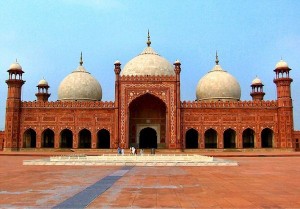 After breakfast proceed for full day sightseeing of Lahore including Lahore fort, Museum, Badshahi Mosque, Shalimar Gardens, Jahangir’s Tomb, Wazir Khan Mosque.
After breakfast proceed for full day sightseeing of Lahore including Lahore fort, Museum, Badshahi Mosque, Shalimar Gardens, Jahangir’s Tomb, Wazir Khan Mosque.
Lahore is the capital of Punjab Province of Pakistan and 2nd largest city in the country was the seat of power in northern subcontinent for almost 1000 years. With a rich and marvelous history dating back to over a thousand years ago, Lahore is no doubt Pakistan’s cultural capital. One of the most compactly inhabited cities in the world, Lahore remains a vivacious economic, political, transportation, amusement, and educational hub. Lahore preserves its historical rank as one of the world’s most multinational and vigorous of cities. Lahore has been a center of cultural heritage for many civilizations. It witnessed the rise and fall of different invaded reign and absorbed the cultural festivities of all invaders into its own and assumed the role of the cultural capital of Pakistan.
Lahore was the cultural hub of the northern part of the subcontinent which widens from the eastern banks of the Indus River to New Delhi. Mughal structures such as the Badshahi Mosque, Mausoleum of Allama Iqbal, the Lahore Fort, Shalimar Gardens, and the mausoleum of Jehangir and Noor Jahan are popular tourist attractions for the city. Lahore is also home to many British colonial structures built in the Mughal-Gothic style, such as the Lahore High Court, the General Post Office, Lahore Museum and many older universities including the University of the Punjab.
Lunch at the hotel.
Lahore is referred to as the cultural heart of Punjab as it hosts most of the arts, cuisine, festivals, film-making, music, gardening and intelligentsia of the country. Known for its affiliation with poets and artists, it has the largest number of educational institutions in Punjab and some of the finest gardens in the continent. It is also an important religious center as it is home to hundreds of temples, mosques, and shrines like Data Durbar Complex & Wazir Khan Mosque. Minar-e-Pakistan is a tall minaret in Iqbal Park Lahore, built in the honor of the Lahore declaration. The minaret reflects a mix of Mughal and modern structural design, and is built on the location where on March 23, 1940, seven years before the formation of Pakistan; the Muslim League passed the Pakistan Resolution.
Dinner & overnight at the hotel. (Breakfast, Lunch & Dinner).
Day 11: Lahore-Rohtas Fort-Rawalpindi/Islamabad
Breakfast at the hotel. AM. Drive to Rawalpindi, en-route visiting Rohtas Fort.
Rohtas Fort is located in a gorge around 16 km North West of Jhelum, 7 km from Dina & 190 kms from Islamabad. Fort has been built on a mound where the small Kahan River congregates one more rainy water flows called Parnal Khas and turns east towards Tilla Jogian Range. Rohtas Fort is built by the great Afghan king Sher Shah Suri. Fort is about 4 km in perimeter and is a unique example with combination of Pukhtun and Hindu structural design in the Indian subcontinent. Afghan king Sher Shah Suri built Rohtas Fort to block Emperor Humayun’s return back to India after defeating in the conflict of Kanauj. This fort lies on the old GT road between the North (Afghanistan) to the Plains of Punjab. It blocked the line of attack from Peshawar to Lahore.
The other reason was to restrain the local clan of Potohar region. The Gakhars who were cronies of Emperor Humayun and declined their loyalty to Sher Shah Suri. The Emperor instructed the local Janjua Rajput clan to help in building the fort to press the Gakhars. Sher Shah Suri named Rohtas Fort after the well-known Rohtasgarh Fort in Shahabad district near Baharkunda in Bihar India, which he confined from the Raja of Rohtas Hari Krishan Rai in 1539. Rohtas Fort is an incomparable paradigm of early Muslim martial architecture in central and South Asia.
After lunch continue drive to Rawalpindi/Islamabad. Arrive and transfer to the hotel.
Dinner & overnight in Rawalpindi/Islamabad. (Breakfast, Lunch & Dinner).
Day 12: Rawalpindi/Islamabad-Taxila-Besham
After breakfast drive to Besham, en-route visiting Taxila sights and museum.
Taxila is 40 kms away from Islamabad the capital city of Pakistan, was once the seat of Oriental civilization. In 6th century B.C, It was first talked about as a satrapy of the Archemenian Empire. It was attacked by Alexander the Great (Sikandar-e-Azam) & passed along to other monarch until finally he reached the hands of Ashoka, who give the shape of the city into a learning and cultural centre. The original Gandhara era pursued in a while, after that Taxila remained the centre of learning, thinking and sculptures. It came to a devastating and pitiable closing stage when sacked by White Huns. Today, here is a well-maintained museum & eight sites sprinkled in the region of a very short radius. Amongst the best conserved are Sirkap, Jaulian (the University) and Mohra Moradu.
Lunch in a local restaurant. Continue drive to Besham.
Arriving at Besham we are at the base perimeter of Indus valley with fascinating view of the Indus River and the legendary road known as the Karakuram Highway (KKH) 8th wonder of the world. The widen of our traveling from Besham to Thakot (Shangla) is just a slight glance of the wonders and inspirational values that this road has in store for its travelers who take their journey with it on upstream path. Arrive and transfer to the hotel.
Dinner & overnight in Besham. (Breakfast, Lunch & Dinner).
Day 13: Besham-Gilgit
En-route lunch in a local restaurant. Arrive and transfer to the hotel.
Gilgit is administratively capital city of Gilgit/Baltistan and business hub in the region. Its ancient name was Sargin, later it is locally known as Gilit. Gilgit was an important city on the Great Silk Road, along which Buddhism was spread from south Asia to rest of the Asian countries.
Dinner & overnight in Gilgit. (Breakfast, Lunch & Dinner).
Day 14: Gilgit-Hunza
After breakfast proceed for Kargah excursion.
Located on a rock near Kargah Nullah (Narrow valley), 10 km away from Gilgit city is an attractive rock impression of Buddha from 7th century A.D.
After lunch drive to Karimabad Hunza. Arrive and transfer to the hotel.
Karimabad is the delightful old capital of the Hunza Kingdom. From Karimabad, with its souvenir shop, post office and tea shop, you can obtain a superb view of the valley laid out below you and of the peaks at the back. Karimabad area is scattered with natural flowers and blossoming fruit orchards. We will spend half our day in this town enjoying the greenery and enchantment in the sound of waterfall.
Dinner & overnight in Karimabad (Breakfast, Lunch & Dinner).
Day 15: Karimabad full day tour
A short jeep traveling will take us to Nagar Valley. The beauties of the village are fruit orchards, longevity of local people and enjoy the many mountain flowers that point the landscape. We have excellent views of Ultar Peak, and the Hunza Valley as seen from Nagar.
Lunch at the hotel.
Baltit fort (Museum) was the old palace of the Mirs of Hunza and was settled until 1960. It is more then 400 years old. Baltit is a questioning long-winded old place and has four stories, strongly built of stones, sun-dried mud and wood. Baltit is built on a cliff edging at the back side; it is a gorge and then the Ultar glacier shining in the sunshine. The structural design here, as at Altit Fort, reflects a Tibetan influence. The local people says that a Princess of Baltistan get married a time in power Mir and brought with her Balti masons, carpenters and craftsmen to build Baltit and Altit as part of her gift/dowry. In the ‘museum room’ are coats of mail, weapons and the warning drums that sounded the alarm in an attack. The view from the top of the fort is well worth the climb.
Dinner & overnight at the hotel. (Breakfast, Lunch & Dinner).
Day 16: Karimabad-Khunjerab Excursion-Gulmit
Early breakfast at the hotel. Morning proceed for full day Khunjerab Pass excursion.
 Transfer to Attaabad Lake, cross the lake by motor boat. Arrival in Gulmit. Continue drive to Khunjerab Pass. Take lunch boxes from Sost or have lunch in Sost.
Transfer to Attaabad Lake, cross the lake by motor boat. Arrival in Gulmit. Continue drive to Khunjerab Pass. Take lunch boxes from Sost or have lunch in Sost.
Khunjerab Pass (at an elevation of 15397 ft / 4693 m) is a high mountain pass in the Karakuram Mountains in a strategic position on the northern border of Pakistan’s Gilgit-Baltistan region on the southwest border of the Xinjiang province of China. The Khunjerab Pass is the highest cemented international border crossing in the world and the highest point on the Karakuram Highway. The road across the pass was completed in 1982, and has old-fashioned the unpaved Mintaka and Kilik Passes as the primary passage across the Karakuram Range.
On the Pakistani side, the pass is 42 kms from the National Park station and checkpoint in Dih, 75 km from the customs and immigration post in Sost, 270 km from Gilgit, and 870 km from Islamabad. On the Chinese side, the pass is 130 kms from Tashkurgan, 420 kms from Kashgar and some 1890 kms from Urumqi city. The Chinese port of entry is located 3.5 km along the road from the pass in Tashkurgan region.
Evening drive back to Gulmit. Arrive and transfer to the hotel.
Gulmit is the head quarter of Tehsil Gojal, in the upper Hunza region of District Hunza/Nagar of Gilgit/Baltistan. Territory is located in the deep in the Karakuram Mountain Range. Gulmit is a centuries-old historic town, with mountains, peaks and glaciers. It is a tourist spot and has many hotels, shops and a museum. Its altitude is (7900 ft / 2408m) above the Arabian Sea level. Gulmit is also a Turkish or Iranian word which means the valley of flowers. Before 1974, when Hunza was a state, Gulmit used to be the Summer Capital of the formerly Hunza state. After the abolition of the state it became the Tehsil’s set up of government. The oldest undamaged house in Gulmit is more than six centuries old.
Dinner & overnight at the hotel. (Breakfast, Lunch & Dinner).
Day 17: Gulmit-Duiker-Chilas
Breakfast at the hotel in Duiker.
Duiker is a small village which is 4-5 kms away from Karimabad, situated above Altit Village at a height of (9,327 ft / 2,850 m) approximately, from where one can get gorgeous view of whole Hunza valley and all adjoining peaks as well as Hoper Glacier from this view point.
After some times drive back to Karimabad and continue drive to Chilas.
Arrive and transfer to the hotel.
Chilas was on the very old caravan track over the Babusar Pass into India and on the Indus trail of Besham, and many rock engravings/impressions were left by travelers in this area. Chilas is standing under the shadow of world famous Killer Mountain Nanga Parbat. Arrive and transfer to the hotel.
Dinner & overnight in Chilas. (Breakfast, Lunch & Dinner).
Day 18: Chilas-Shangla Pass-Swat
Breakfast at the hotel. Drive to Swat via Shangla Pass.
The drive during the day is an experience of huge diversities. Turning off from Besham to swat valley towards west, we start climbing the Shangla Pass (6,683 ft / 2,042 m). The top presents the most gorgeous views of the adjacent mountains whose slopes are laden with alpine trees, at faraway distance, the Swat Valley with the river is also visible.
On the way lunch at Besham. Continue drive to Swat. Arrive and transfer to the hotel.
Mingora Bazaar is the commercial hub of Swat region and well-worth visiting, there some one will find emeralds for which Swat is well-known. If time permits then continue to Murghazar to visit old white palace constructed from white marble and adorned with ornate carvings.
Dinner & overnight in Swat. (Breakfast, Lunch & Dinner).
Day 19: Swat-Takht-e-Bhai-Peshawar
After breakfast proceed to visit Swat museum.
Swat museum is located in Saidu Sharif, which has a large collection of Gandharan Statues collected from some of the Buddhist sites in Swat. In the ethnographic section there is some local embroidery, carved wood, and tribal jewelery. There are also a few coins on display.
Takht-e-Bhai, a Buddhist site is situated in Northwest of Mardan on the road to Swat. Takht-e-Bhai is the most inspiring and complete Buddhist site in Pakistan. The main construction of the Takht-e-Bhai compound is the monastery and stupas founded in the 1st Century AD & left un-used in the 6th century. Surrounding the monastery on the point on top of it are the remains of private houses, some of them are three storeys high. The name Takht-e-bhai means the hill of springs. There is considerable proof to prove that during the Buddhist period there were lots of springs on the hill here which have now dried up around 200 AD. When Raja Varata was the King of Gandhara, Takht-e-bhai was the capital of the kingdom of that era. The stupas on the site was found to contain square court bounded by a series of cells which accommodates the images. An inscription in Khuroshti characters by the Partian king gandaphernes dated 46 AD was found.
Arrive and transfer to the hotel.
Dinner & overnight in Peshawar. (Breakfast, Lunch & Dinner).
Day 20: Peshawar city tour.
Breakfast at the hotel.
Full day sightseeing of Peshawar Museum, Qissa Khawani Bazaar, Mohabat Khan Mosque.
Peshawar is located in a big valley near the eastern part of the historical Khyber Pass, and the Indus Valley. Peshawar is also known as (City on the Frontier). In Persian Peshawar’s strategic location on the intersection of Central Asia and South Asia has made it one of the majority ethnically vibrant and vigorous cities in the greater region. Peshawar is the capital of Khyber-Pukhtunkhwa and the business & administrative center and central economic hub for the Federally Administered Tribal Areas of Pakistan. Peshawar has changed into one of Pakistan’s most ethnically, linguistically, and religiously diverse cities. In the last three decades, there has been a major increase in urban inhabitants, in part due to internal resettlement of the people to seek better employment opportunities, education & services and in part because of the entry of Afghan refugees and other people displaced by military operations and civil unrest in adjacent regions. Peshawar is the major educational, political center of Khyber Pukhtunkhwa.
Lunch in a local restaurant.
PM. Proceed for excursion to Khyber Pass. (Subject to permission).
(To visit Khyber Pass a permission letter is required from the Political agent)
Dinner & overnight at the hotel. (Breakfast, Lunch & Dinner).
Day 21: Peshawar-Islamabad
After breakfast drive to Islamabad. On the way lunch in a local restaurant.
Arrive in Islamabad. Take some rest and have farewell dinner after finishing all the activities, it is time to say good bye to each other with a wish to meeting again in future.
Transfer to Benazir Bhutto International Airport Islamabad for home bound flight.
(Breakfast, Lunch & Dinner).
SERVICES END
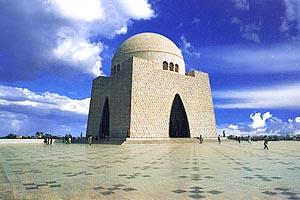
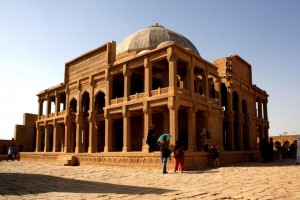
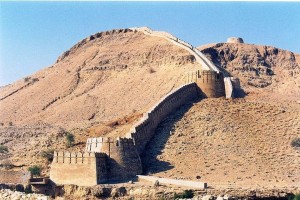
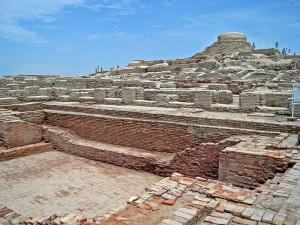
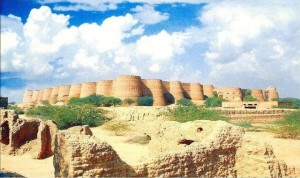

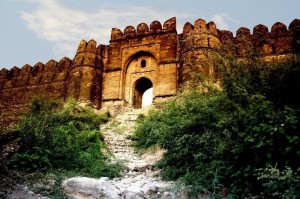

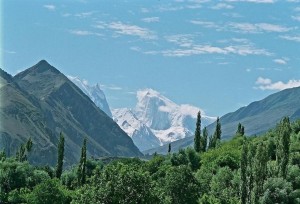
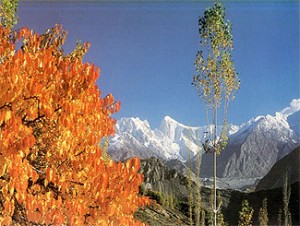

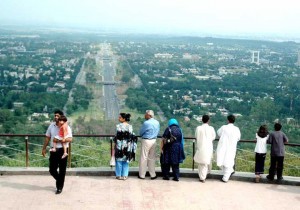

Comments
Teds Woodworking has over 16,000 woodworking plans with STEP BY STEP instructions, photos and blueprints to make every project very easy!